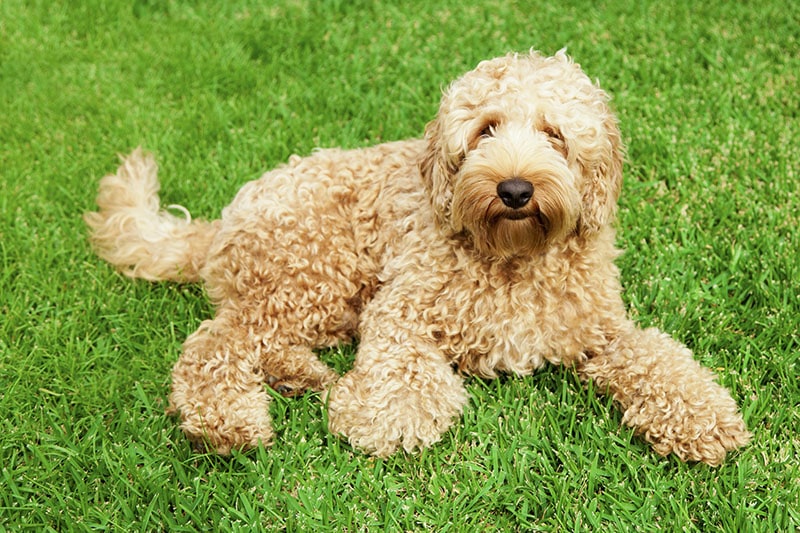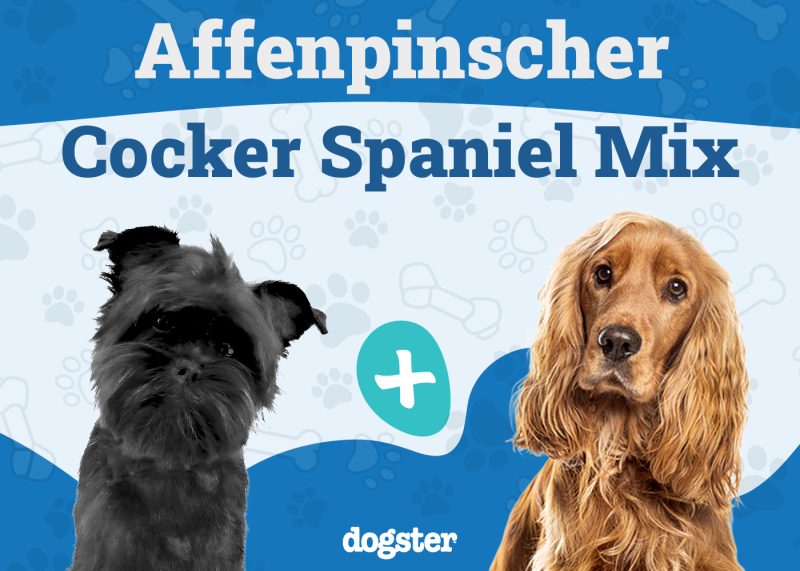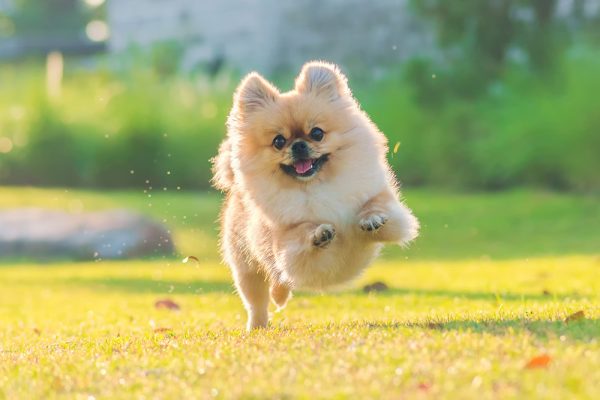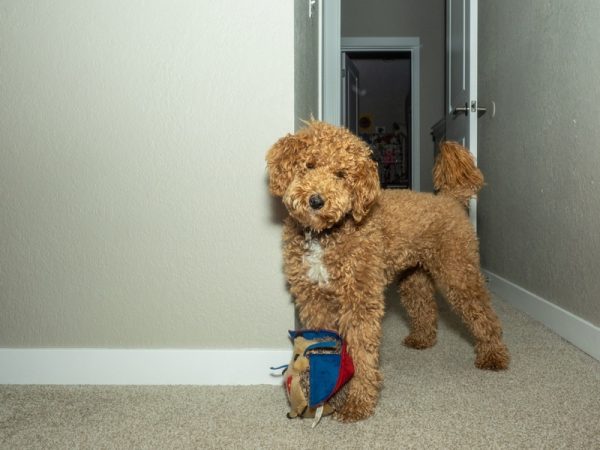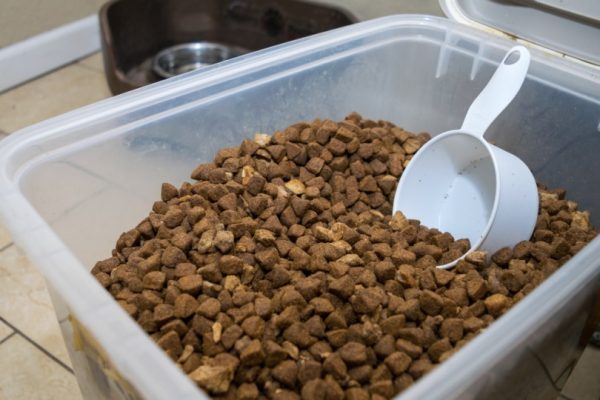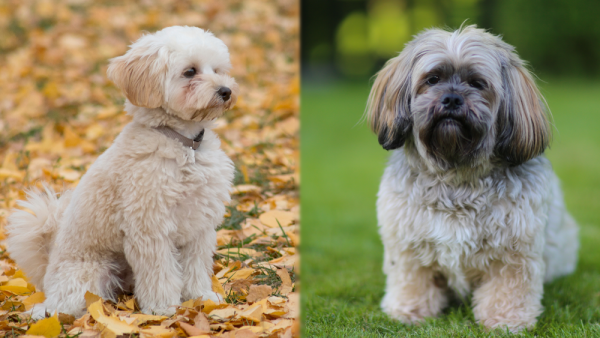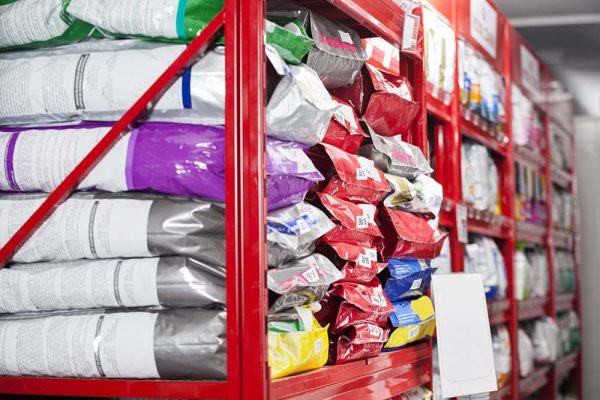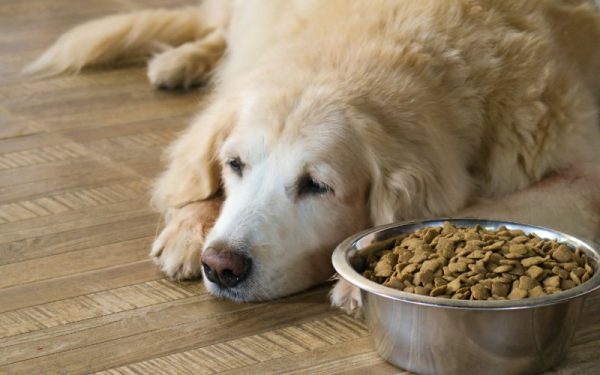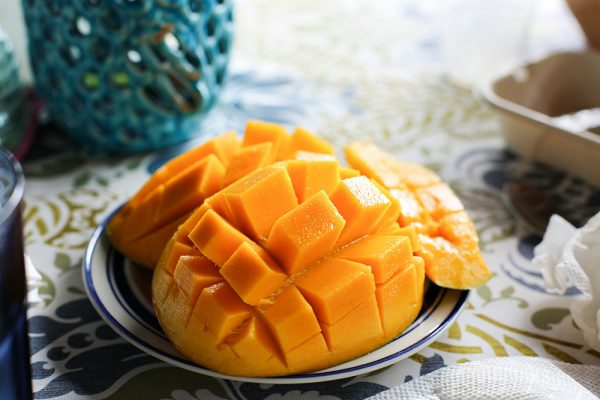In this article
When it comes to canine coat color and pattern variation, the Labradoodle boasts one of the most impressive ranges. You can find a Labradoodle of just about any color, coat pattern, or combination of these under the sun. Labradoodles are affectionate, smiley, and fun-loving dogs. It makes sense then that they would have a wildly variable wiry, wavy, or curly-haired and vibrantly colored appearance to match their bubbly personalities.
Classification of their myriad colors, color combinations, and patterns is a rather complex affair but we’ve broken it down here for you. Let’s take a look at the 17 different Labradoodle colors and patterns.

The 17 Labradoodle Coat Colors and Patterns
We’ve divided this list into two parts for a bit more clarity. The first part looks at the different colors whilst the second part explores the different coat patterns.
The 10 Labradoodle Coat Colors
Labradoodles are slightly more likely to be a solid color as opposed to multi-colored or patterned, Having said this, and rather confusingly, even solid-colored Doodles can have lighter or darker tones in parts of their coat.
No one can agree on what is the most common color for a Labradoodle. Various sources will argue that it’s black, others say chocolate, and still others reckon it’s cream or gold. We could conjecture that these colors are all equally as common depending on factors such as region and bloodlines.
Let’s take a look at the 10 Labradoodle colors.
1. Black
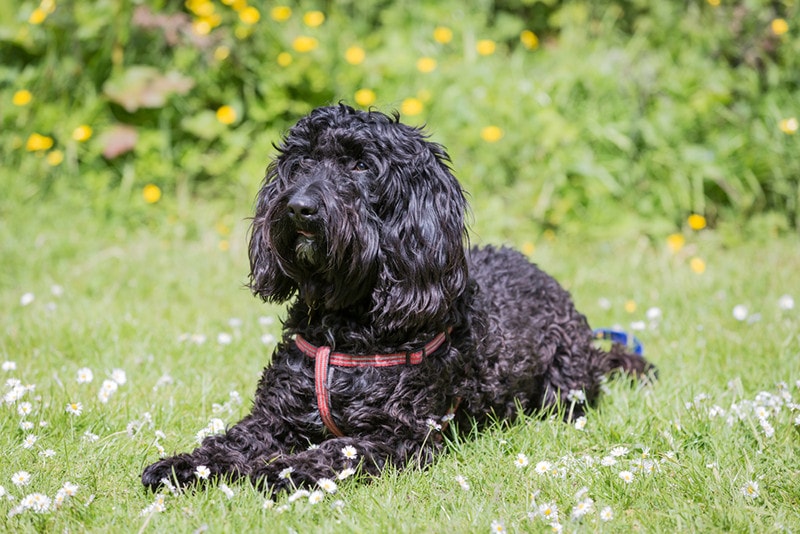
As mentioned, black is one of the most common colors found among Labradoodles. Black is a common color for both Poodles and Labradors, so it follows that it would be for Labradoodles, too. Despite this, crossing a black Lab and a black Poodle does not guarantee a black Labradoodle pup. However, if you can be certain that both parents are purebred, then there’s a high probability that at least one or more of the pups in the litter will be black.
A black Labradoodle will be completely black, with a black or dark brown nose, black foot pads, and brown eyes.
2. Chocolate/Brown
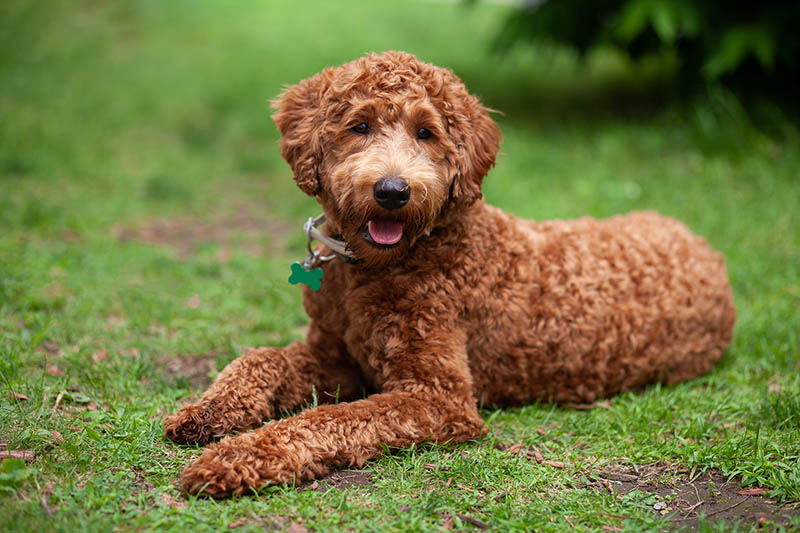
Chocolate or brown and the various shades thereof is another fairly common Labradoodle color. Pups are born with very dark brown to black fur which gradually lightens to their chocolate or brown adult hue. This color is often the result if both parents are chocolate (or brown), but it could also result from one black parent and one cream parent, for example.
A true chocolate Labradoodle will have a brown or rose-colored nose and brown eyes. Some may exhibit unusual and attractive blue-gray or sometimes golden eyes.
3. Café
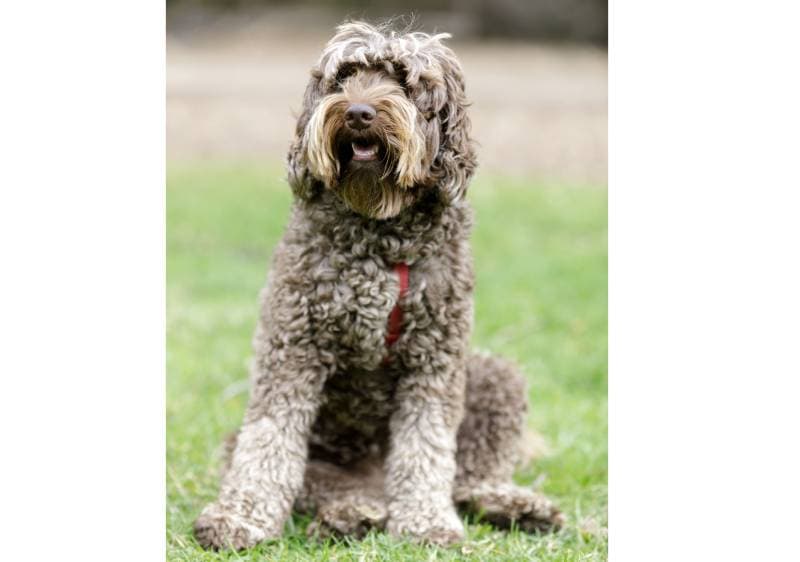
In some circles, café is not considered to be a separate color, but rather, it is thought to be a subcategory of chocolate. It is rare and often occurs when there are other breeds (such as Spaniels) present in the mix. This is the case of the Australian Labradoodle, and so this is a color most likely to be observed in this Doodle variety.
Café Doodles have a beautiful chocolate coat with surprising silvery-gold inserts or overtones. This effect is achieved by the hair tips taking on this metallic sheen. Café Labradoodles usually have brown eyes and a black or brown nose, which could be a very light livery brown.
4. Gold/Apricot/Caramel
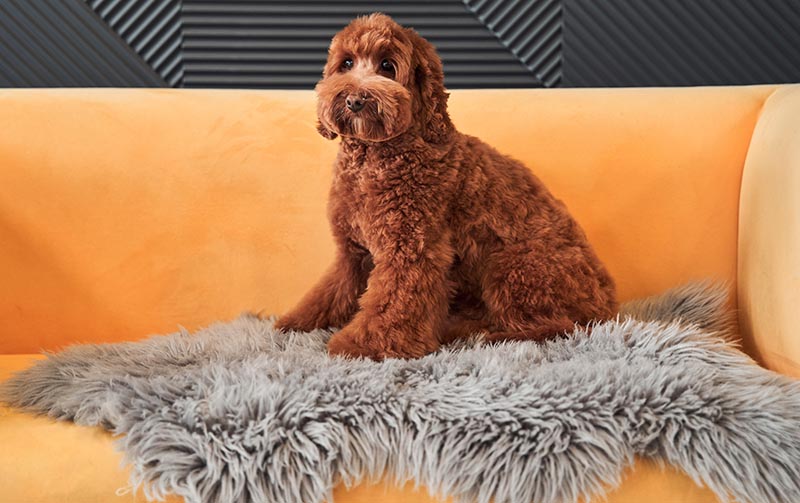
Another common Labradoodle color is this brilliant light chocolate with red or golden undertones. Unlike the chocolate Labradoodle, this Apricot Doodle dog is born light-colored and gradually darkens to its variably light orange adult hue. They will be entirely one color and have black noses and dark brown eyes. Once these dogs have reached their adult color, they may then proceed to lighten again, sometimes for the rest of their lives.
5. Cream/Tan
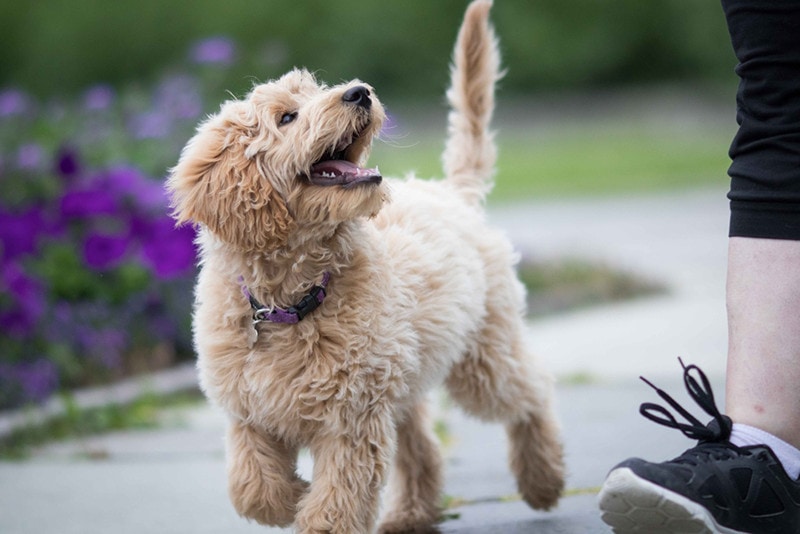
The tan or cream Labradoodle is a lighter version of the apricot or caramel color. Sometimes you may do a double take and wonder if you’re looking at a cream Doodle or just a white Doodle that’s had a good time in the dirt! Either scenario is possible!
Cream Labradoodles are quite common and though they usually have a consistently colored coat they may exhibit slightly darker points or reddish highlights. They have black or brown noses and brown eyes.
6. Parchment
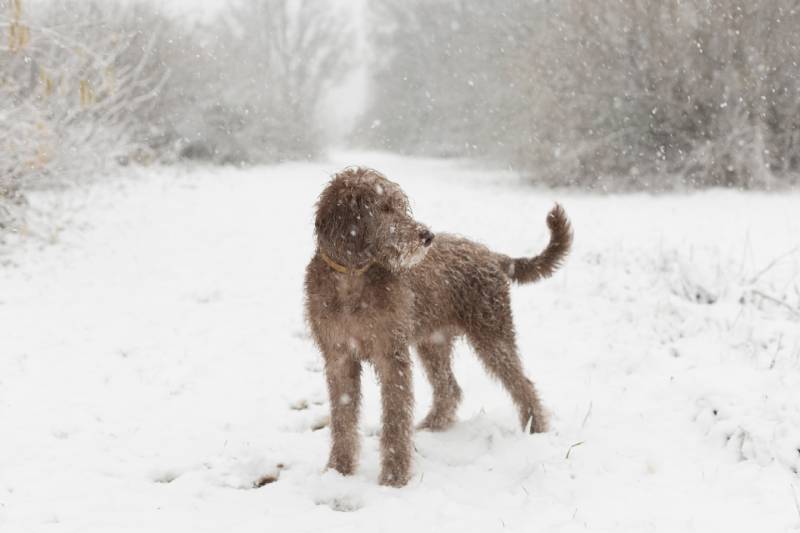
Parchment-colored Labradoodles are exotic looking. They are not quite gold and not quite cream—they are somewhere in between, the color of milky coffee. They will be completely single-colored. What sets them apart is their pinky-brown noses, making them easily discernible from a cream or caramel Doodle.
7. Red
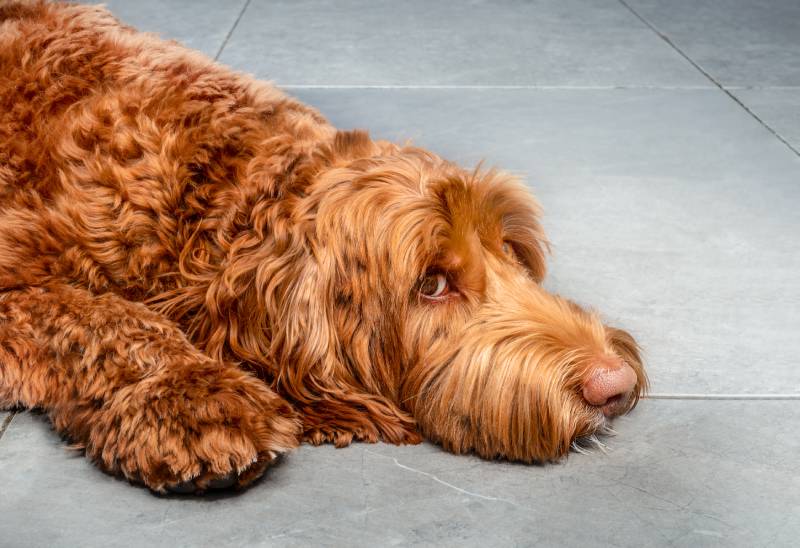
The red Labradoodle is a rare beauty. They are a deep, often mahogany, shade of red and are sought after in Doodle circles. However, a true red Labradoodle is not very common as the color results from a relatively inactive gene. So, if you have your heart set on this color you may have to wait a while.
The coat is a uniform and consistent red from root to tip and it is paired with a black nose and the eyes are dark brown.
8. Blue/Gray/Silver
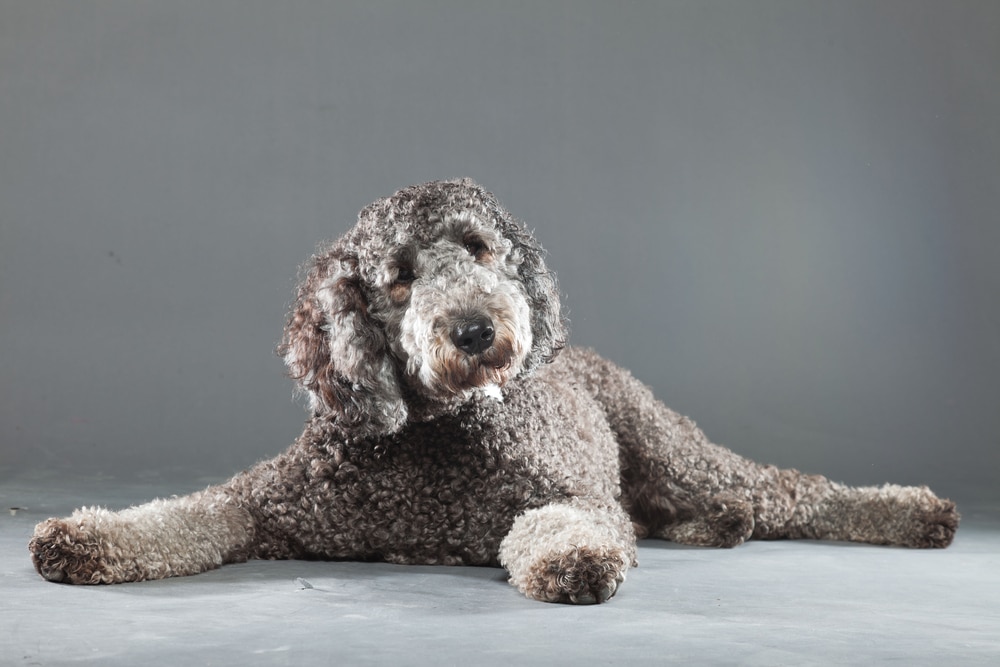
Sometimes these three colors—blue, gray, and silver—are considered separately but they are essentially a variation of the same color with a few nuances.
Labradoodles of this shade are usually born black and lighten with silvery hairs in their coat due to a dilution gene present in their genetic makeup. If you look carefully at the black pup, you may be able to see a telltale blue undertone in their skin hinting at their adult coloring. The nose color will also be bluish black and the eyes usually brown.
Occasionally, blue Labradoodles are born with blue eyes—a captivating combination for sure! Depending on the exact hue of the base black and the type of light hairs that develop, they can take on a blueish, grayish, or silver appearance.
A completely blue or gray Labradoodle is very rare indeed. This color is more likely to show up in certain coat patterns such as parti, merle, or sable. We’ll discuss these in a bit.
9. Lavender
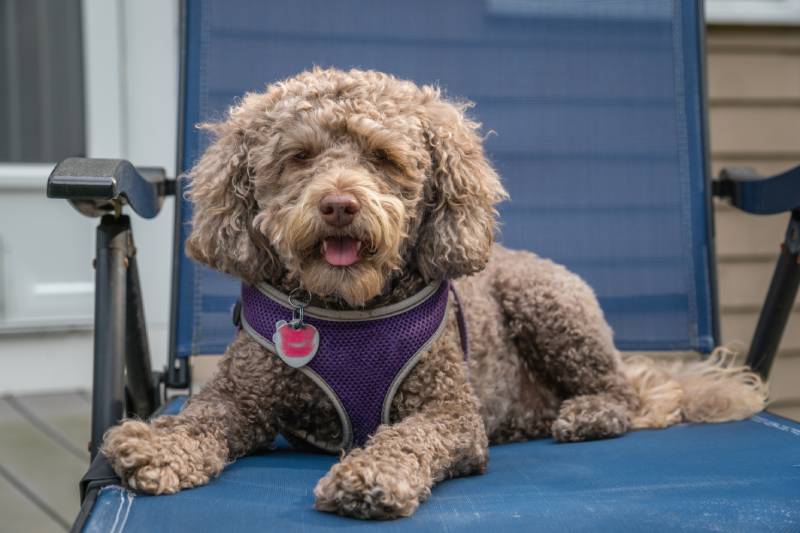
A lavender Labradoodle usually begins its life as a chocolate-colored pup. As time progresses, it lightens or fades to washed-out chocolate with beautiful pink-lilac highlights. The gene responsible for this dilution is frequently responsible for their nose lightening to a pinkish color too.
It’s almost impossible to predict if a pup will become lavender, so it’s a bit of a lucky draw. Labradoodle breeders may specialize in producing Doodles of this color and might be able to provide you with a Doodle that will become lavender with a confident degree of certainty.
10. Chalk White
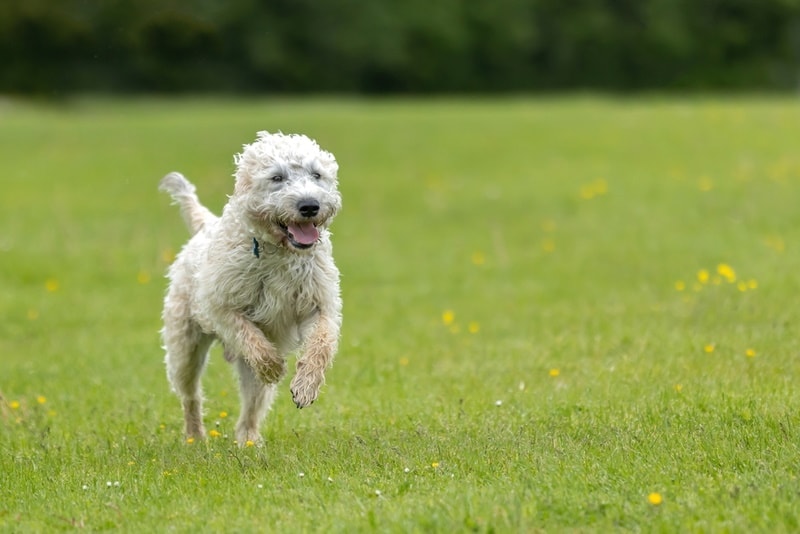
A chalk white, or white, Labradoodle is just that, white. They can be hard to differentiate from a light cream Doodle, but if you were to compare them side by side, the difference would be clear. They are a uniform white color, so long as they haven’t been frolicking in mud puddles!
White Labradoodles frequently have darker patches of fur beneath their eyes, known as tear staining. They sometimes have the same around their mouth from other substances such as saliva and food.
A true white Labradoodle will keep its white coat into adulthood and beyond, unlike many of the other color Doodles that undergo color changes. They have a black or brown nose and brown eyes.

The 7 Labradoodle Coat Patterns
We’ve had a look at all the wonderful colors that a Labradoodle can be. The next part of this list explores the interesting and sometimes exotic patterns that can be observed in their coats. These patterns usually present in some combination of the colors that we have already learned about. We have the Doodles’ mixed heritage to thank for this wonderful variety of exciting patterns.
11. Parti
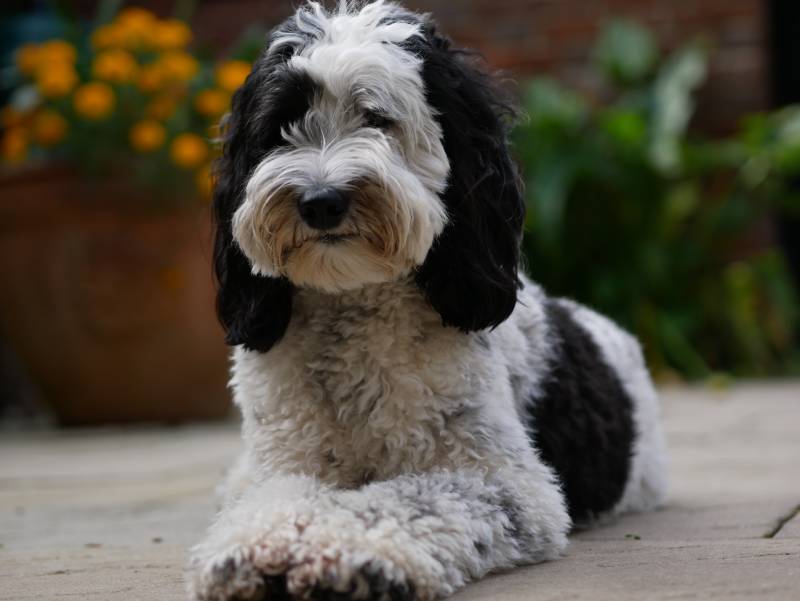
Parti-colored is one of the more common patterns that a Labradoodle may exhibit. A parti Labradoodle is bicolored with a base of at least 50% white with an overlay of dark patches in various patterns. The dark patches are usually chocolate, black, red, or apricot.
It is very unusual for a first-generation (F1) Labradoodle to exhibit parti coloration. The F1 generation consists of Doodles resulting from a Lab-Poodle cross. Partis are more likely to occur in multigenerational Labradoodles: F2, F1b, F3, etc. These are F1 Labradoodles that have crossed back to a Poodle, or two F1 Labradoodles that have been bred to one another, for example.
Parti’s nose colors usually correspond to their dark-colored patches.
12. Merle
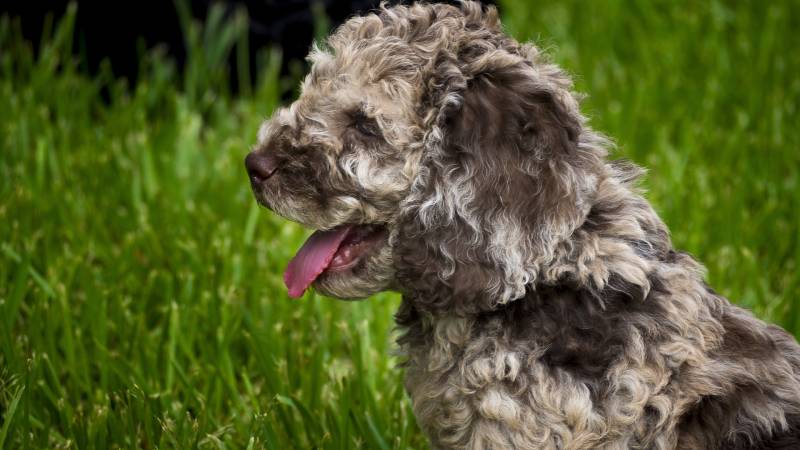
The merle-patterned Labradoodle can have a rather exotic appearance. Comprising a darker base coat with a spotty, mottled splattering of lighter patches, you could be forgiven for thinking that an entirely other species had entered the mix. It is not unusual for merle pooches to have alluring light-colored gray or blue eyes.
The merle gene is a bit of a double edge sword. Whilst it may produce some interesting and attractive Doodle aesthetics, carriers are at higher risk of visual and auditory defects. If two merle individuals are bred, the resulting pups are at an unacceptably high risk of being born deaf and/or blind. This practice is therefore considered unethical and never knowingly carried out by reputable breeders and true animal lovers.
13. Phantom
Phantom Labradoodles are adorable. They have a dark base coat, usually black or chocolate, with light tan or gold points around their muzzles, jowls, over their eyes, and on their chest. These markings resemble those exhibited by other dogs such as Dobermans and Rottweilers. Their nose color will correspond to their base coat color.
Sometimes a phantom Doodle may have a few small white patches added into the mix, usually on its feet or chest. This is known as tri coloring and makes the phantom even more special.
14. Abstract
Abstract Labradoodles are almost the inverse of a parti. They have a solid, dark-colored base coat with white patches that follow no particular predictable pattern. The white patches must cover less than 50% of the Doodle for them to be considered abstract as opposed to parti. Their noses will correspond to their base coat color.
15. Tuxedo
A tuxedo Labradoodle could technically fall into the abstract pattern category, except that its white patches are anything but random. Instead, they form a perfect little tuxedo pattern on the Doodle, giving it the appearance of being constantly prepared for a posh dinner party!
The tuxedo Labradoodle is black with white markings on its chest and neck and is not common at all. Sometimes they may have very cute white socks as well. Its nose will be dark brown or black.
Tuxedo markings can also be present on other base colors such as red or chocolate. Some people also categorize pooches with this coloration of distinct white patches as tuxedos.
16. Sable
This is one of the rarer and unusual Labradoodle colors. Sable Doodles are two different colors, but there’s a catch. They aren’t conventionally two-toned with patches of one color of hair and patches of another. Each hair is two different colors! Sable pups are born dark-colored, either chocolate, black, or red. Between the time they are born and around 6 weeks of age, the lighter color will start to emerge at the base of each strand of hair.
The sable Doodles may retain this textured two-tone for its entire life or it may lighten to the “root” hair color, depending on grooming practices mostly.
17. Brindle
It is very rare indeed to find a brindle Labradoodle, but they do exist, and they are beautiful. They are a rich mahogany red and black color in the trademark tiger stripe pattern that is typical of brindle patterning. It could sometimes be confused with sable, but time will tell whether the Doodle is a true brindle. Brindle Doodles have black noses and dark brown eyes.

Canine Chameleons!
You may have noticed a trend after reading through this list of Labradoodle colors and patterns. Yes, Labradoodles have an odd propensity to change color over time. It’s not so simple as saying they might lighten or darken as they get older. They could lighten over time and then get darker again. Or, their body might lighten leaving their head slightly darker, and vice versa. Virtually anything is possible!
Chocolate Labradoodles are one of the most likely to undergo color and shade changes. The bottom line is, you never quite know what you’ll get in terms of their coat color when you adopt a Labradoodle.
Puppies are almost always darker than they will be when they are fully mature. The lightening of their coat as they mature is known as “clearing.” Beyond this very strong likelihood, it’s difficult to predict how a Labradoodle will—or even possibly, won’t—change color over time. We think this adds to their allure!

Final Thoughts
We’ve got to be honest; we don’t think it makes any difference what color a Labradoodle is. No matter what color they are, they have winning personalities and huggable good looks that make them a welcome addition to any family.
In a way, it’s a good thing that their coat color is largely inconsequential to their allure since there’s little guarantee that your Doodle is going to stick to any one color during its lifetime!
See also:
- Awesome Labradoodle Names For You Curly Friend
- Is a Labradoodle a Mutt or a Designer Dog? Vet-Verified Differences
Featured Image Credit: zstock, Shutterstock
